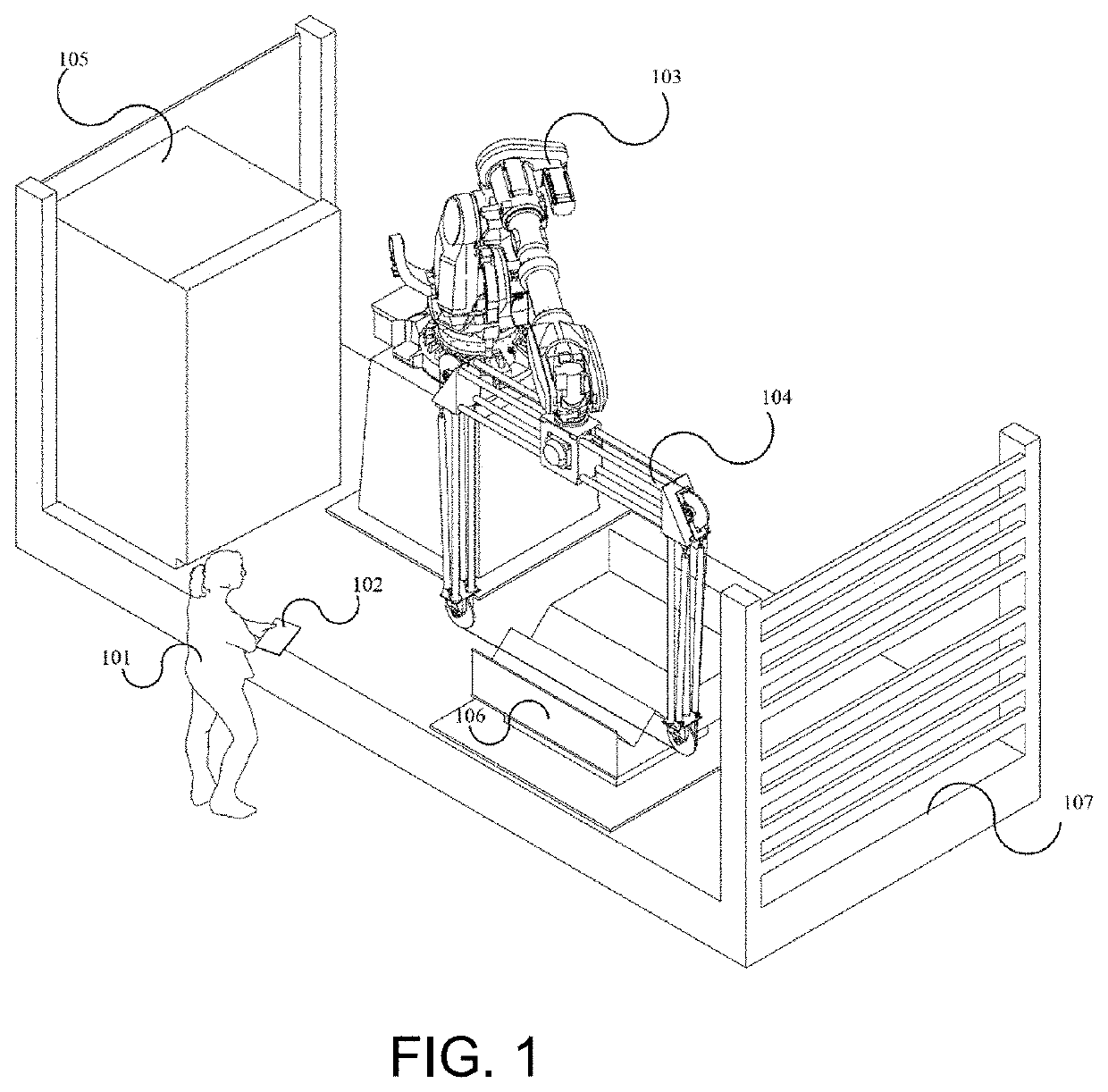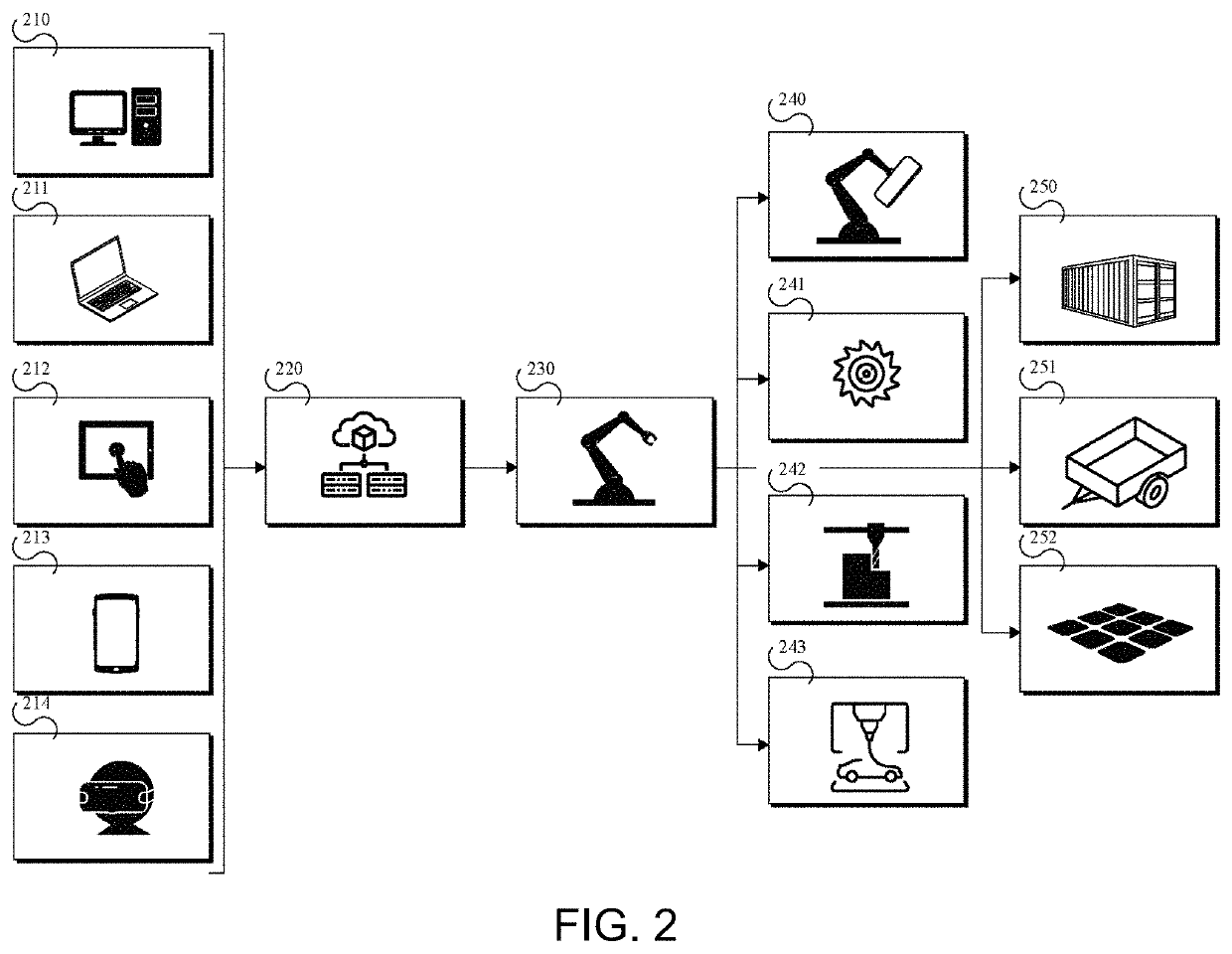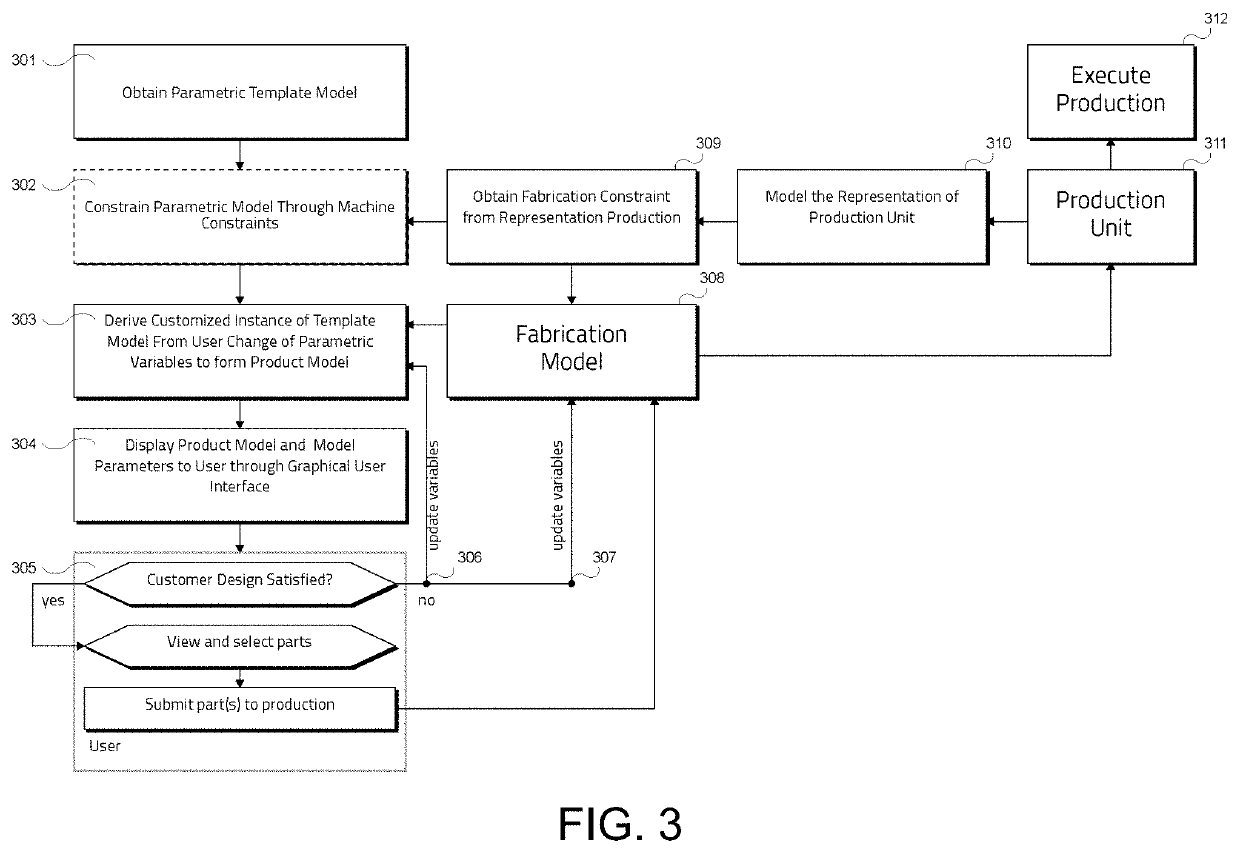Smart manufacturing framework
- Summary
- Abstract
- Description
- Claims
- Application Information
AI Technical Summary
Benefits of technology
Problems solved by technology
Method used
Image
Examples
examples
[0110]A high-level overview of an embodiment of the system performing the method is illustrated in FIG. 7. The method starts with a user interacting with the system choosing one of a set of available actions. Examples of possible actions may be “Select”, “Model”, “Orbit”, “Pan”, “Zoom”, “Miscellaneous”, “Admin Operations”, or “Fabricate”, but other actions can form part of the system as well. These actions can be initiated via either gestures or user interface (UI) interactable elements. Any action Ai can only be performed if the system is in an allowable state. The state space on which Ai is deemed valid can be represented by Si where the constraint Si≈{ } holds true. For instance, the action “Orbit” possesses a Si={3D View}. The Action Interpreter accepts the human input, performs the validation and if found valid, propagates it to the relevant sub-system for further processing.
[0111]The Design Model Evaluator block depicted in FIG. 7 may be configured to perform several mathemati...
PUM
 Login to View More
Login to View More Abstract
Description
Claims
Application Information
 Login to View More
Login to View More - R&D
- Intellectual Property
- Life Sciences
- Materials
- Tech Scout
- Unparalleled Data Quality
- Higher Quality Content
- 60% Fewer Hallucinations
Browse by: Latest US Patents, China's latest patents, Technical Efficacy Thesaurus, Application Domain, Technology Topic, Popular Technical Reports.
© 2025 PatSnap. All rights reserved.Legal|Privacy policy|Modern Slavery Act Transparency Statement|Sitemap|About US| Contact US: help@patsnap.com



